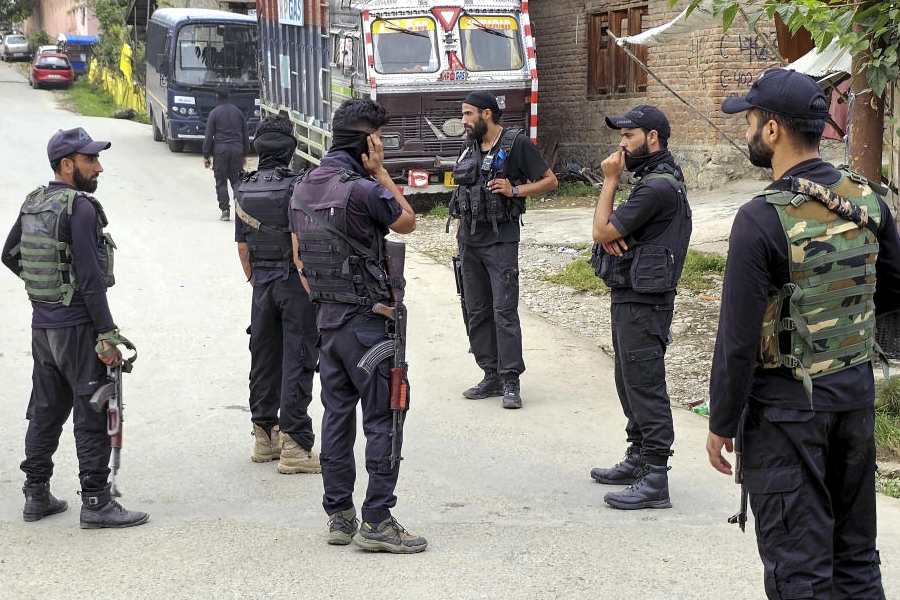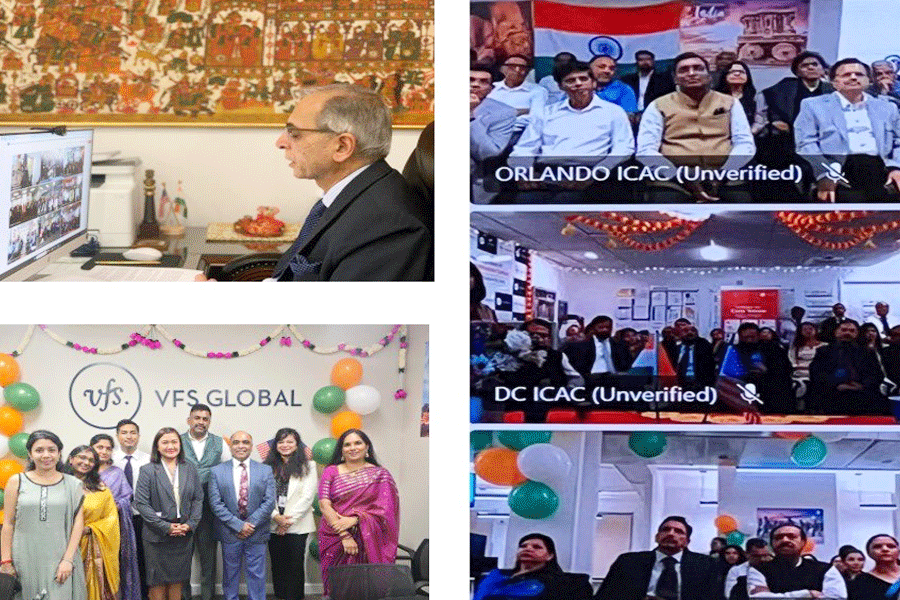 |
| Girls in traditional attire participate in the festival in Kohima on Sunday. Telegraph picture |
Kohima, July 31: Feasts and merrymaking marked the second day of the Naknyulum festival being celebrated by the Chang Naga community in the state today.
Chang organisations have planned various cultural programmes during the three-day festival in the state, particularly in Tuensang, the home district of the indigenous community.
A Chang legend says, the world was once enveloped in darkness and day and night could not be differentiated. It was so dark that people could not even go out to collect firewood and water. They remained inside their houses for six days, till they ran short of essentials. To keep the fire burning, they burnt everything including the horns of buffaloes, mithuns and cows. On the seventh day, there was light for which people thanked god by celebrating the Naknyulum. No worship is performed during the festival, but certain rules are strictly observed. This festival is held on the eleventh month of the Chang calendar, which falls in July.
The day of the festival is announced by ungshedbou (priests) of the tribe’s Oung clan. The announcement should be sudden, leaving only a two-day gap. The festival starts on the last day of the moon, which is the flour-grinding day. Domestic animals are slaughtered, the young and the old play games and there is music and laughter. Village streets and houses are cleaned. Firewood and water is stocked.
The second day, which is the dark-moon day, is called youjem. On this day, no one goes out of the village, not even for drawing water. Friends and relatives exchange gifts and food items on this day. Meat, wine and freshly baked bread is used aplenty. People participate in games like top-spinning, tug-of-war, high jump, long jump, climbing an oiled pole, jumping and grabbing big lumps of well-cooked meat hung in a row along bamboo ropes. Women also play traditional games. There is feasting and merrymaking throughout the day but no dancing.
Today was the second day of the celebrations. Footpaths and houses were decorated with leaves and ngounaam, a herbal shrub which is planted in front of every house to ward off evil spirits. People, especially children, also put the leaves in their ear lobes.
Nobody remains inside the house at dusk. During this hour, members of every household bury a seed called vui long (tape seeds) inside paddy husts at their front and back doors and burn it. Every member of the family remains inside to hear the sound of the bursting seeds. The vui long explodes and if the sound and the exploding fragments bound back towards the house, it is considered a bad omen. If the sound is good and the fragments go out it is considered good fortune. At this hour, god Shambuli Muhgha is believed to descend from heaven and visit every house and anyone found outside is harmed.
The third day is the day of cleaning the village and its surroundings, including roads. After the celebrations, other activities like cleaning of footpaths leading to fields and neighbouring villages starts. People seek the blessings of village elders, priests and community leaders for a bountiful harvest. They also offer special prayers in the church to invoke god’s blessings. Girls born in this month are named Monyu. In Kohima, too, programmes are being held in various colonies. Other Naga communities are invited for the celebrations to foster peace and harmony between the communities.
Several leaders from Chang community have called for peace and unity in Nagaland as they celebrate the festival. Some foreign and domestic tourists were also seen participating in the festival.
The Nagaland government has declared the state a “land of festivals”. The Hornbill festival to be held at Naga heritage village Kisama, 12km from here, from December 1 to 7 will be the festival of all festivals where all Naga communities, including those from Myanmar and neighbouring villages, will participate.










